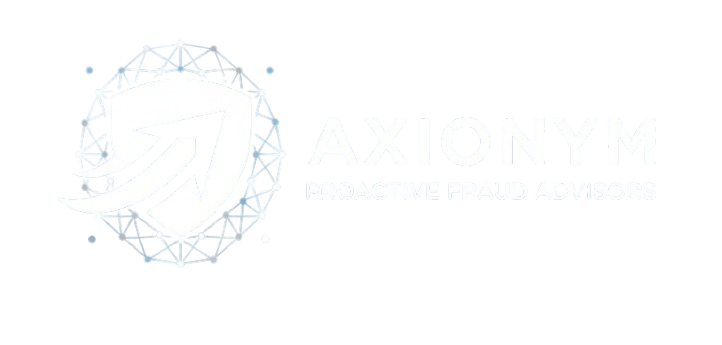PSD3 is Coming: Are Your Fraud Defenses Ready for the Shake-Up?
Another day, another regulation? Not quite. The upcoming Payment Services Directive 3 (PSD3) isn't just a minor update; it's a significant evolution in the European Union's fight against financial fraud. For consumers, it promises a smoother yet more secure payment experience. For businesses, it's a clear signal: it's time to level up your fraud prevention game. As a fraud consultant, I've seen how fraudsters exploit the smallest gaps. PSD3 aims to plug some of the most critical ones. Let's break down what's changing and how you can prepare.
PSD3 builds on its predecessor (PSD2) by refining and strengthening the rules around payment security, with a sharp focus on Strong Customer Authentication (SCA) and proactive fraud detection.
Key Upgrades to Authentication and Fraud Detection
PSD3 builds on its predecessor (PSD2) by refining and strengthening the rules around payment security, with a sharp focus on Strong Customer Authentication (SCA) and proactive fraud detection.
A New Era of Liability and Collaboration
Beyond the technical requirements, PSD3 shifts the landscape in two fundamental ways: liability and information sharing.
First, PSPs will now bear more liability for fraud. In cases of "spoofing" where a consumer is deceived into authorizing a fraudulent transaction (and the PSP failed to perform the IBAN-Name Check), the PSP can be held responsible. This puts the onus on financial institutions to protect their customers more proactively.
Second, the directive strongly encourages the creation of networks for real-time data sharing between financial entities. Fraud isn't an isolated problem; it's a network of criminals attacking multiple institutions. By sharing intelligence on emerging fraud patterns and bad actors in real-time, the entire financial ecosystem can build a stronger, collective defense.
Your Action Plan: How to Prepare Now
PSD3 is still moving through the legislative process, but waiting for the final text to be published is a mistake. The direction is clear, and proactive businesses will have a significant advantage.
PSD3 builds on its predecessor (PSD2) by refining and strengthening the rules around payment security, with a sharp focus on Strong Customer Authentication (SCA) and proactive fraud detection.
- Expanded SCA Triggers: Remember the friction of adding a new card to your mobile wallet? Fraudsters loved that potential weak spot. PSD3 makes SCA mandatory for these scenarios. Adding a new payment method to a digital wallet will now require the same level of verification as making a high-value online purchase. It's a simple but powerful change to secure the entry point.
- The IBAN-Name Check Mandate: This is a game-changer for tackling Authorized Push Payment (APP) fraud, particularly "spoofing." Payment Service Providers (PSPs) will be required to verify that the recipient's name matches the IBAN provided for instant payments. If there's a mismatch, the payer is warned. This simple check introduces a critical layer of friction for criminals trying to trick people into sending money to the wrong account.
- Smarter, Faster Fraud Detection: The directive moves beyond static rules. PSPs must now implement more sophisticated, real-time transaction monitoring. This means leveraging tools like device fingerprinting, location data, and behavioral analytics to spot anomalies. Is a customer suddenly logging in from a new country on an unrecognized device at 3 AM? That's the kind of red flag these enhanced systems are designed to catch instantly.
- Balancing Security and Convenience: No one likes repetitive authentication prompts. PSD3 acknowledges this by extending the re-authentication period for trusted devices and recurring transactions to 180 days. This reduces friction for legitimate users. The directive also formally encourages the use of advanced biometrics (like facial recognition or fingerprint scans) but wisely requires fallback options for users who can't or prefer not to use them.
A New Era of Liability and Collaboration
Beyond the technical requirements, PSD3 shifts the landscape in two fundamental ways: liability and information sharing.
First, PSPs will now bear more liability for fraud. In cases of "spoofing" where a consumer is deceived into authorizing a fraudulent transaction (and the PSP failed to perform the IBAN-Name Check), the PSP can be held responsible. This puts the onus on financial institutions to protect their customers more proactively.
Second, the directive strongly encourages the creation of networks for real-time data sharing between financial entities. Fraud isn't an isolated problem; it's a network of criminals attacking multiple institutions. By sharing intelligence on emerging fraud patterns and bad actors in real-time, the entire financial ecosystem can build a stronger, collective defense.
Your Action Plan: How to Prepare Now
PSD3 is still moving through the legislative process, but waiting for the final text to be published is a mistake. The direction is clear, and proactive businesses will have a significant advantage.
- Audit and Update Your Systems: Your current fraud prevention stack might not be enough. It's time to invest in tools that support enhanced transaction monitoring, behavioral analytics, and the new SCA requirements.
- Implement Robust Monitoring: If you aren't already, begin developing and implementing monitoring systems that can analyze multiple data points in real-time. Don't just look at the transaction; look at the context—the device, the location, the user's history, and their behavior.
- Stay Informed: Keep a close eye on official communications from the European Union. Understand the final requirements and the implementation timeline so you can ensure a smooth transition and maintain compliance.

